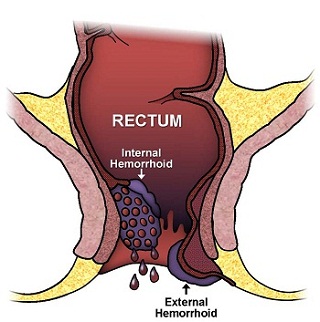Treatment For Piles
We understand that Piles (Mulvyadh/Bavasir) may not be a subject you feel comfortable talking about, but there is no need to suffer in silence. If you have Piles, you are not alone. It is estimated that Piles will affect at least 50% population at some point during their lives, that makes it one in two of us! Do keep in mind that the earlier you seek advice and a thorough diagnosis, the better the chances are that the symptoms can be cured with minimal discomfort. Because of the pre-conceived notion that treatment and the consequences are extremely uncomfortable, many patients previously preferred to live with the problem rather than see a doctor. However, advances in medical science have made the current treatments extremely patient friendly, with minimal discomfort and an abridged healing time.
DR ASHWIN PORWAL: A PRODIGY IN PILES
Dr Ashwin Porwal is the founder and lead surgeon of Healing Hands Clinic (HHC). He has dedicated his career to practice and research in Proctology – the branch of medicine dealing with the disorders of the rectum and anal canal. He has had the privilege of receiving training in Proctology from the world-renowned Colorectal surgeon, Dr Antonio Longo of Italy. Dr Longo invented the MIPH/PPH (Stapler surgery) for Piles and Dr Porwal has received hands-on training from the master himself. Till date >20,000 patients have been satisfactorily treated for their Piles at Healing Hands Clinic. Dr Porwal has performed the maximum number of Stapler surgeries in Asia. He brought to India the Leonardo Laser for Piles and the country’s first Laser Hemorrhoidoplasty (LHP) was performed by him at HHC. Today, the clinic treats more patients with LHP than any other center in the world. With his indisputable expertise in this field, Dr Porwal has trained many fellow surgeons from the country and across the globe in the Stapler and Laser procedures. The regular MIPH/PPH surgery, clearly the most popular technique worldwide, nevertheless has a recurrence rate of 8%. Dr Porwal with his immense experience has modified the procedure by adding Horizontal Mucopexy to it, which brings down the bleeding and recurrence rate to <1%. In November 2013, he presented a Research paper on this, 'Stapler hemorrhoidopexy alone vs Stapler hemorrhoidopexy plus Mucopexy for Grade 3 Internal Hemorrhoids' at the 3rd Biennial ECTA Conference, Singapore. Dr Porwal was selected among international speakers at the World Congress of Coloproctology-2011, Rome, where he presented a Study Paper on 'Piles and Constipation in Indian Scenario'. He has also presented a Paper at ESCP Conference-2014, Barcelona, on 'Stapler Hemorrhoidopexy - Successful results from a case series of 3000 patients treated at a single center in India.
HOW ARE PILES DIAGNOSED?
With almost one in every two adults being affected by piles at some stage of their life, there is no need for one to be embarrassed or frightful of piles. In fact, the earlier you seek help, the better the chances that you will be free of piles with minimal treatment.
After obtaining a careful history regarding your symptoms and your personal and family medical history, your doctor will need to perform an examination. This usually consists of careful inspection of the outside of the anus, placement of a finger through the anus into the rectum (digital examination), and placement of a finger-sized instrument through the anus to allow visual inspection of the hemorrhoidal tissue (Proctoscopy).
At times a Barium study or Colonoscopy may be advised if your doctor suspects any other cause of bleeding that needs to be ruled out.
DO PILES HAVE GRADES / TYPES?
There are two main types of hemorrhoids: internal and external. Internal hemorrhoids are not sensitive to touch, pain, stretch, or temperature, while external hemorrhoids are covered by skin that is very sensitive.
When talking about hemorrhoids, one needs to understand the meaning of 'prolapse'. The anal cushions are normally fastened in the sphincter by muscles and tissue. In case too much pressure is applied, as on straining, the system of securing these cushions is damaged. Subsequently, they protrude outside the anus and this protruding mass is called the prolapse.
Internal hemorrhoids are thus graded by the degree to which they have prolapsed into:
- Grade 1 : Slightly enlarged hemorrhoidal tissue with no prolapse.
- Grade 2 : Prolapse that protrudes on pressure but goes back on its own
- Grade 3 : Prolapse that needs to be manually pushed in by the patient
- Grade 4 : Prolapse that constantly remains on the outside and does not go back even on manual repositioning. At this stage they are usually painful.
External hemorrhoids usually occur as a painful lump outside the anus. In case of clot formation ( Thrombosed external hemorrhoid ), there may be severe pain.









